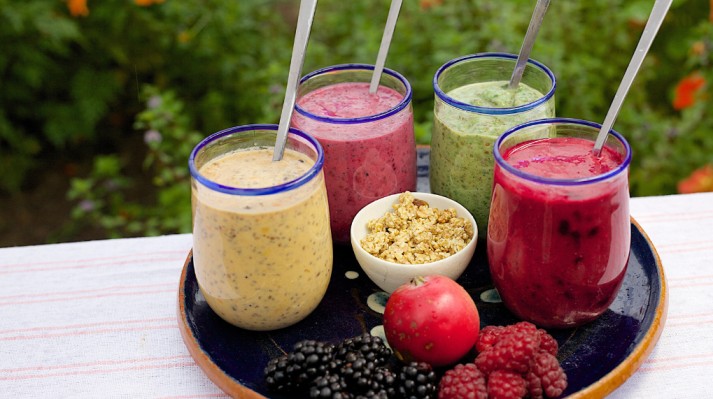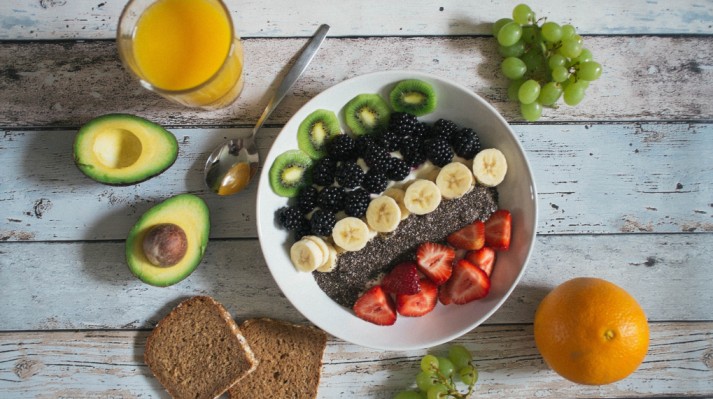The prospects of body recomposition, which entails losing fat while at the same time gaining muscle, can be nerve-wracking yet one of the most fruitful endeavors. It is not about losing weight – that’s just the scale numbers – but rather focuses on increasing the amount of lean muscle tissue while decreasing the fat mass. It is quite possible to construe the body you desire through an adequate diet regime and active exercises accompanied by adequate lifestyle modifications. As a nutritionist, let me walk you through the basics of a diet for body recomposition and how to get rid of belly fat and gain muscles.
What is Body Recomposition?
Body recomposition, therefore, means altering an individual’s body composition in the way they want it. While regular weight loss helps to lose total body mass, body recomposition increases the ratio of muscle mass to fat in a body. This approach is especially common among athletes, bodybuilders, and people who are in search of a permanent and healthy lifestyle change.
Body Recomposition Basics
1) Caloric Balance: Where body recomposition is concerned, the principle focus is on the regulation of calorie consumption. To lose fat, one needs to consume slightly fewer calories than one burns but should avoid extremely low intakes of food that would slow muscle growth. It’s the question of moderation, where you can lose fat and still maintain or even gain muscle.
2) Macronutrient Ratios: It is very important to manage one’s diet to change the intake of proteins, fats, and carbohydrates. Protein should be given top priority because it helps rebuild and grow muscles. It is advised to consume 1.6-2.2g of protein per kilogram of body weight daily for body recomposition. The intake of fat and carbohydrates should be controlled to ensure the body is fuelled adequately without storing fat.
3) Strength Training and Cardio: Ideal body recomposition involves both strength training for muscle gain and cardiovascular exercise for fat loss. Strength training increases metabolism and muscle tissue which aids calorie utilization even when the person is idle. Cardio is beneficial, especially HIIT, in reducing calories and fat loss since it focuses on this aspect of training.
How To Lose Belly Fat?
Lower body fat is relatively easier to lose than the fat accumulated around the belly, and it is the most dangerous type of fat. But if the efforts are targeted, it is possible to shed abdominal fat through body recomposition. Here’s how:
1) Increase Protein Intake: Protein is useful in muscle build-up as well as in the breakdown of fats since it has metabolic properties. Consumption of lean protein like chicken, turkey, tofu, and legumes will reduce belly fat while building muscle.
2) Eat Whole Foods: Consuming properly processed foods like vegetables, fruits, whole grains, and lean proteins reduces one’s appetite, resulting in fewer calories in a day, which helps reduce fat.
3) Reduce Processed Sugars and Refined Carbs: Consuming processed sugars and refined carbohydrates results in fat accumulation, especially in the abdominal area. Reducing your intake of sweets, soft drinks, and processed foods can easily trim your belly fat.
4) Manage Stress: Stress leads to the release of cortisol, which is associated with the storage of fat in the abdomen. Stress reduction strategies like yoga, meditation, and deep breathing will also reduce cortisol levels and, in turn, the size of belly fat.
5) Get Enough Sleep: Sleep deprivation affects hunger hormones, making people more likely to eat more than they should. Getting 7-9 hours of quality sleep at night is also beneficial for fat loss, especially abdominal fat loss.
6) Stay Hydrated: Water intake is also crucial in fat loss because it increases the metabolism rate and reduces hunger. It also helps in digestion and prevents the accumulation of water in the body so that one does not feel bloated.
Body Recomposition Diet and Workout Plan
Diet Plan:
1) Protein with Every Meal: Make sure that at least one of the meals has a good source of protein like chicken, fish, eggs, nuts, beans, or soy. This is useful in preserving muscle mass as you shed fat.
2) Balance Carbs and Fats: Carbohydrates are important for energy during workouts; therefore, consume complex carbohydrates like sweet potatoes, oats, and brown rice. Avocados, nuts, and olive oil are good sources of healthy fats that supply energy and are good for the body.
3) Timing Matters: It is recommended that you take protein and carbohydrates before and after your workouts as it aids in recovery and muscle build-up. Complex carbohydrate in the form of pre-workout snacks and protein in the form of post-workout meals enhances exercise capacity and recovery.
4) Portion Control: It is also advised to avoid overeating and this can be achieved by ensuring that one takes the right portions. A food tracking app can also be used to ensure that one is within his or her recommended daily caloric intake.
5) Avoid Empty Calories: Eat fewer junk foods, soda, fast foods, and snacks that are devoid of nutrients. Consequently, concentrate on nutrients suitable for fat loss and muscular development.
Workout Plan:
1) Strength Training: Emphasize resistance training for all major muscle groups three to four times a week; use compound exercises like the squat, deadlift, bench press, and row for these efforts. These types of movements work side by side, targeting multiple muscles that lead to muscle growth and fat reduction.
2) Progressive Overload: To understand that continuing to improve is possible, work harder and make sure that the load, or resistance when strength training is being used, gets every so often increased. This helps in increasing muscle mass and cutting down on greases.
3) Cardio: 2-3 times a week, it is preferable to carry out aerobic exercises. In particular, high-intensity interval training is most effective for body recomposition due to effective fat loss, while muscle mass is retained.
4) Rest and Recovery: Recovery is as important as training. Take care that muscles are properly rested so that they do not get injured and can grow.
Conclusion
Quite simply cannot expect physical muscle overhaul or recomposition in a few months. However, adherence to both diet and specific exercise approaches can bring the desired change. The solution is simply to consume sufficient nutrients to build muscle while slightly reducing the caloric intake to lose weight. Correctly balancing protein consumption and control of macronutrients together with regimens of weight training & aerobics should help you achieve your goals. Be consistent and patient in your efforts, and you will be rewarded with a healthier, fitter, and stronger physique. At QUA Nutrition, our nutritionists provide you with a completely personalized Body Recomposition Diet to help achieve your goals.









